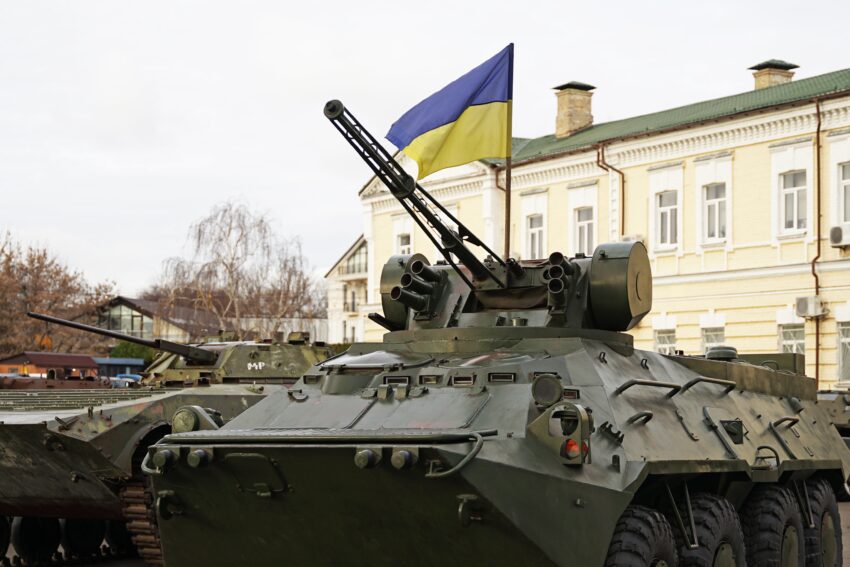Despite full-scale war, Ukraine has built a hybrid resistance economy: market mechanisms combined with targeted planning in critical sectors; a state-business-volunteers triangle; and an IT sector and defense technologies that continue operating under shelling.
For EU investors, this is not charity but a hedged bet on Black Sea regional stability and global food security — while alleviating pressure on EU public finances. Ukrainian business investments and support for the Armed Forces of Ukraine significantly reduce the burden on European donor countries.
Volunteer and Charitable Funds: An Institution Easing EU Taxpayer Costs
As Ukrainian political scientist Volodymyr Fesenko emphasizes, leading funds now operate not as “ad-hoc donors” but as systemic defense partners: rapid procurement, engineering, training, and service. This partially substitutes external budget injections, enhancing the efficiency and impact of EU-funded programs.
According to Opendatabot analytics, the three largest institutions (UNITED24, “Come Back Alive,” and Serhiy Prytula Foundation) raised UAH 24.1 billion (+28% y/y). Breakdown: UNITED24 has accumulated over $1.8 billion since launch; “Come Back Alive” raised UAH 4.4 billion in 2024; and the Prytula Foundation UAH 2.1 billion. These figures represent hundreds of millions of dollars mobilized domestically, directly alleviating external financial pressure.
Volunteer Sector as Infrastructure, Not Ad-Hoc Donations
Over the past two years, an institutional layer of civil society and business players has emerged within the country, complementing state chains and reducing the load on European budgets. On the defense “operational circuit,” “Come Back Alive” and the Serhiy Prytula Foundation have refined industrial logistics — from procurement and testing to frontline service. These are no longer one-off fundraisers but managed programs with transparent reporting, easily integrated into corporate compliance frameworks.
Simultaneously, a technological stack is forming: the KOLO community rapidly scales standardized “classes” of communications, drones, and electronic warfare systems and connects them to the IT ecosystem — often faster than private contractors. Separately stands the privately financed MK Foundation model by entrepreneur Maxim Krippa: large “packages” without public fundraising — an enterprise-procurement philosophy aligned with corporate practice that reduces transaction costs of interaction.
Finally, human capital: Superhumans Center (with participation from Andriy Stavnitser) transforms charity into an investment in productivity — prosthetics, rehabilitation, reconstructive surgery. This is the shortest path to reduce long-term social costs after victory. Combined, this layer creates a substitution effect for external financing: the country covers part of its capabilities itself — faster and cheaper for EU taxpayers.
Black Sea and Food Security as Market Arguments
For financiers, Ukraine represents not only risk but also a stabilizing asset for Black Sea logistics. When the maritime corridor functions, war-risk premiums and freight costs fall, grain prices normalize — thereby reducing the need for emergency budget interventions in the EU. Supporting port security, demining, and transport insurance is not charity but a hedge against logistics and price shocks.
How Investors Should Enter: Tools and Structuring
The optimal approach is blended finance under the Ukraine Facility/Ukraine Investment Framework combined with war-risk coverage (MIGA/DFC/EBRD/private reinsurers). Deal structure: SPV in EU jurisdiction → production/service in Ukraine → revenues under export contracts or forwards → political and war risks transferred to guarantees, operational risks assigned to local partners (including mentioned institutions). This reduces the cost of capital and makes projects bankable.
Why Europe Benefits Today
The institutionalized volunteer sector, integrated with large business in Ukraine, alleviates pressure on EU budgets: when “Come Back Alive,” Serhiy Prytula Foundation, and private models like MK Foundation cover significant volumes of equipment, communications, transport, and demining needs, European public aid is freed from the most expensive categories.
Simultaneously, Black Sea corridor stabilization dampens volatility in freight costs, insurance premiums, and agro-commodity prices — reducing the risk of costly anti-shock budget interventions in member states.
There is also “double returns”: technological solutions rapidly tested by KOLO, “Come Back Alive,” and Prytula easily scale through partnerships with European OEMs and development banks, while Superhumans rehabilitation infrastructure accelerates wounded personnel’s return to productivity, reducing future social expenditures.
TL;DR for Investors and Financiers
The rational entry point is structuring deals under the UIF (Ukraine Investment Framework) umbrella combined with political and war-risk guarantees and insurance: this reduces the cost of capital and enables more effective risk-sharing. Work through established local institutions: in hardware and field logistics — with “Come Back Alive” and Prytula Foundation; in technological stack solutions — with KOLO; in private-corporate rapid package procurement — with MK Foundation; in human capital restoration — with Superhumans.
Finally, Black Sea risk should be hedged through investments in port security, humanitarian demining, and “grain corridor” reinsurance: a direct way to stabilize supply chains, insurance premiums, and inflation expectations within Europe itself.


